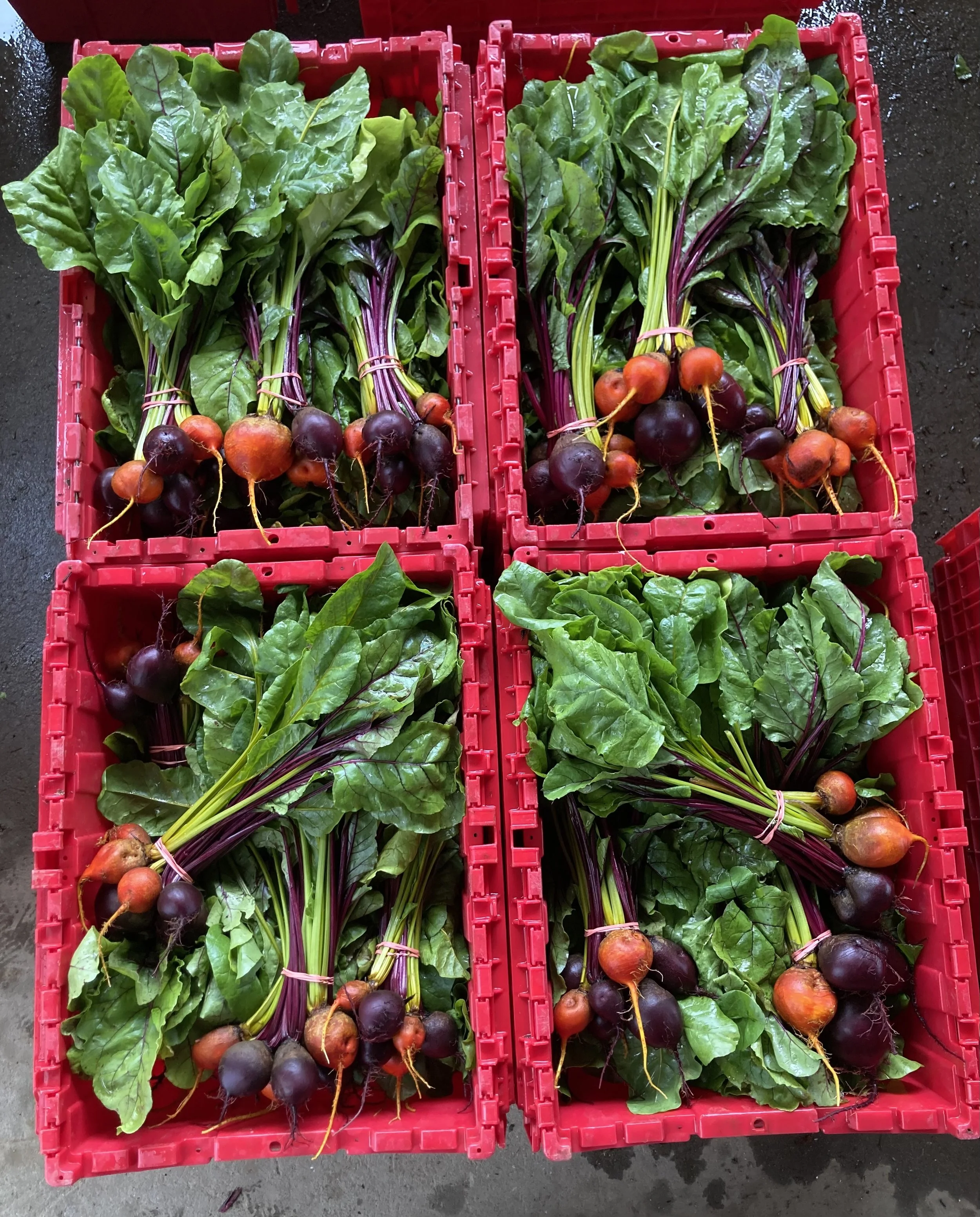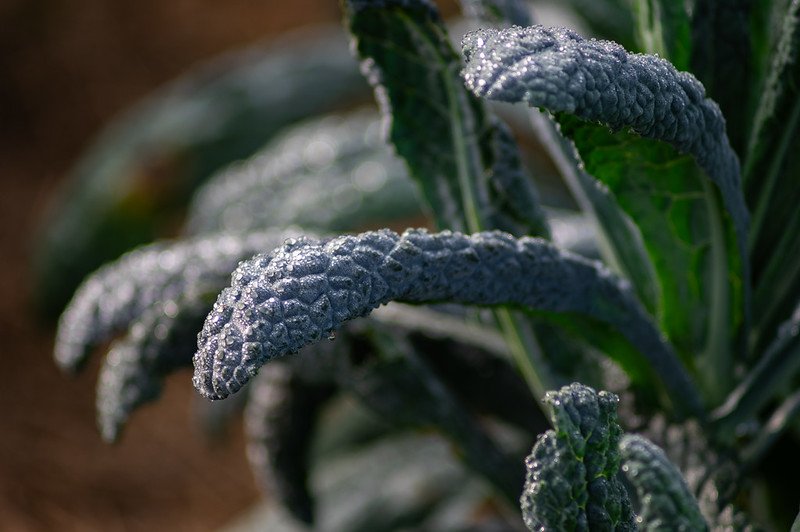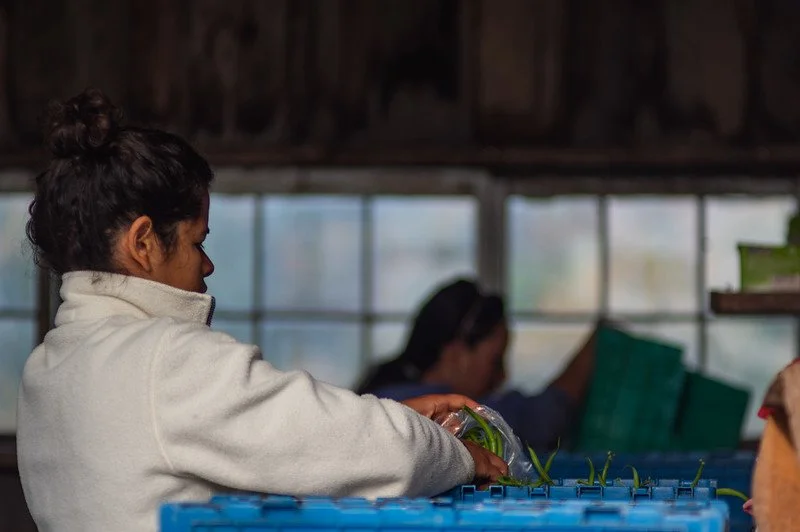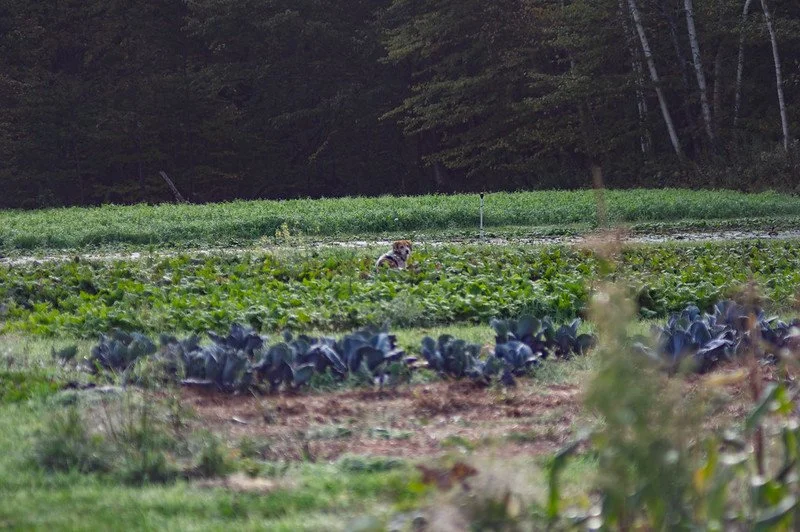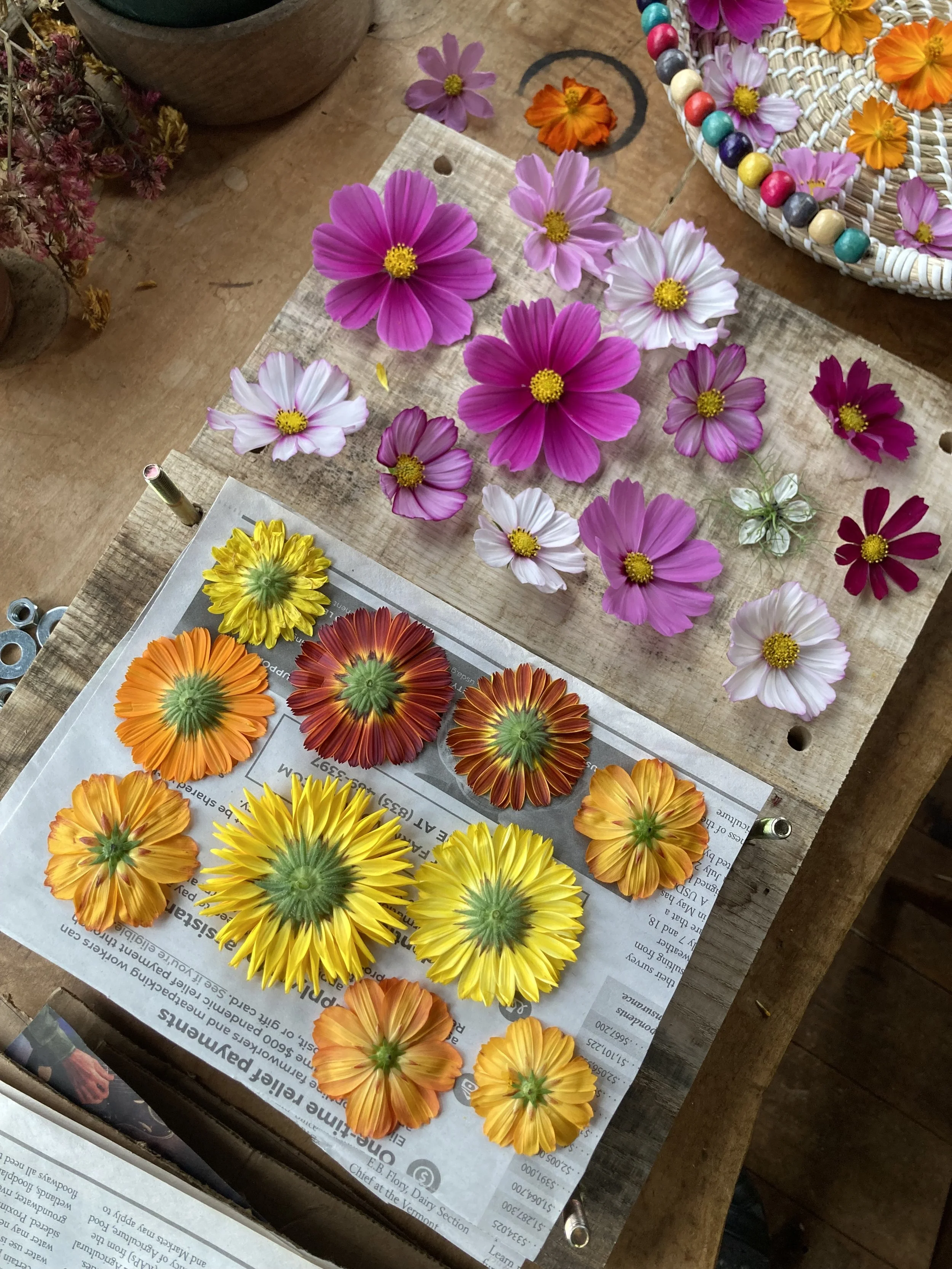18th Week of the Summer CSA season: Week of October 3rd
last week’s rainbow beet bunches for Farmacy, photo by Vanessa Bedoya Melguizo
CSA Balance Due
If you haven’t already paid, your balance is due. You can pay online through your account (with a card or e-check ACH payment), mail a check to Evening Song Farm 48 Nice Road, Cuttingsville VT 05738, leave a check or cash in the CSA cash box at the barn, send money with Venmo @eveningsongcsa, or use EBT. It’s very cool to pay in smaller chunks, just let us know what your payment plan is.
green curly kale, photo by Adam Ford
lacinato kale, photo by Adam Ford
This Week’s Availability
This week we will have yellow beets, red beets, yellow potatoes, red potatoes, mesclun mix, green napa cabbage, baby lettuce, arugula, baby bok choi, green curly kale bunches, lacinato kale bunches, garlic, husk cherries, Carmen sweet red peppers, green sweet Carmen peppers, poblano peppers, jalapeño peppers, green serrano peppers, green tomatoes, tomatillos, shallots, leeks, carrots, plum tomatoes, heirloom tomatoes, Painted Mountain grain corn, brussels crowns, mini Romaine heads, green and red head lettuce, and delicata squash.
If you do any bulk preserving, now is a great time to snag roma paste tomatoes ($2.90/pound.) We also have jalapenos (or serranos, both $6/pound) in bulk if you use any for fermenting, hot sauce, pickled jalapenos, jalapeno jelly, or whatever! If you are inspired to preserve any sweet red or green Carmen peppers ($3/pound for red, $2/pound for green) for the winter, now is a good time for that as well. (We slice and freeze them, dry them, and roast and puree them into a sauce for the freezer.) Send us an email if we should put anything aside for you.
Ordering closes at noon on Tuesdays for Wednesday bags, and at midnight on Wednesdays for Friday bags.
You do not need to fill out the form if you plan to come to the barn on Tuesdays, Wednesdays or Thursdays to pick out your items yourself.
red napa cabbage, photo by Adam Ford
sea of brussels sprouts still sizing up, photo by Adam Ford
baby mesclun mix, sprouting, photo by Adam Ford
Farm News
Last week we finally finished tucking in all the winter greens transplants into the tunnels, woohoo! It’s time sensitive to get things in the ground early enough in the fall so that they put on enough growth before the amount of daylight hours dwindles so low that they stop growing for the winter season. We also finished transplanting strawberries into the field. We anticipate next year’s strawberry crop being a little smaller: the tips we got from the Canadian grower came with a fungal disease this year, that didn’t become symptomatic until all the growers in the northeast who got the tips potted them into trays our greenhouses. About 25% of our crop looked healthy, 25% stunted, and the remaining half died in the trays. The good news is that this disease doesn’t overwinter, so it won’t affect the plants next year. But it’s crucial for the fall planted varieties to go in the ground strong and vigorous to have a really good yield the following spring. We will see. We have had such surprising luck with this crop over the past few years, so fingers crossed that the plants in the ground grow vigrorously!
This summer a CSA member lent Ryan his copy of Stone by Stone by Robert Thorson, and I have been reading it the past few weeks… what a really fun read, especially as a land steward. It’s about the history of stone walls in New England, starting with the geologic origins, through agricultural settler and abandonment history. And if I thought I appreciated the stone walls on this property before, now they feel downright mystical and full of stories to tell. One particular piece of history that felt magical to me was the most common field sizes created by stone walls in New England was determined to be between 2 and 4 acres. This was based on the relationship between distances farmers had to walk from the farthest field edge to manually move rocks, balanced with the minimum sized field that made sense for agricultural production. (In the book he described how creating one 8-acre field took 10 times as many walking miles as creating eight 1-acre fields.) And don’t you know, the 3 big fields we grow these vegetables in are bounded by old stone walls that make each field right in that sweet spot: 2.5 acres and 3.5 acres. (The 3.5 acre piece is bisected by our driveway, making that 2 of our 3 fields, but the actual stone wall perimeter still fits in that sweet spot.) I just loved imagining early colonial setters, moving the stones from their plowed fields just far enough out of the way for a small hillside agricultural field. And those field sizes persist in the 80-ish year old forest on the rest of this property. It’s cool to explore and be aware of how the geology will always determine the built environment of locations.
In the next week or two we are planning to hold an after work competition between Ryan and I to see what can separate seed garlic cloves faster for planting: my method of slamming the stem out by hand, or Ryan’s new, perfectly calibrated lever-based separating tool from Two Bad Cats in Rutland. (We love having such an amazing small farm tool company right nearby! They are clever and kind, and have always helped us tinker with tools.) I know it sounds ridiculous to compete against a machine… but childhood readings of John Henry have buoyed my magical thinking, and I also always gravitate towards the hand method of most tasks. (For example, I delicately dig up multifloral rose roots by hand after years of trying different methods of removing that opportunistic species with other methods!) Anyway, we will let you know what the results of that competition are!
Have a great week,
-ESF Team: Ryan, Kara, Cindy, Galen, Katie, K2, Taylor, Vanessa, Bryan, and Tabita (and Sky and Soraya)
Weekly Recipe
baby lettuce fills the high tunnel for fall CSA season greens, photo by Adam Ford
Tabita and Vane bagging green beans, photo by Adam Ford
drying seeds for birds, photo by Adam Ford
Callie doing her early morning work of hunting for field voles, photo by Adam Ford
Katie making her way up the hill, photo by Adam Ford
restocking tomatoes on CSA display, photo by Adam Ford
corn stalks after harvest, photo by Adam Ford
leeks in the field… foliar disease killed the outer leaves, but we peel those back to a nice leek. One of our goals is to tinker with our leek production to reduce their susceptibility to these fungal diseases that cause the outer leaves to perish. photo by Adam Ford
green squash vines between the corn, photo by Adam Ford
this is the implement that cuts a slit in the thick cover crop residue to tuck transplants right into a no-till field, photo by Adam Ford
tomato clips removed for the season, photo by Adam Ford
Bryan harvesting our peppers, photo by Adam Ford
we picked 250 pounds of green beans last week… and guess what? they all went out the door, photo by Adam Ford
Katie bunching chard on a chilly morning, photo by Adam Ford
Vanessa’s flower tour…
nasturtium adorns all her salads, photo by Vanessa Bedoya Melguizo
a basket of mostly cosmos to dry for winter art, photo by Vanessa Bedoya Melguizo
Bryan made this flower press for Vanessa’s projects, photo by Vanessa Bedoya Melguizo
Tabita and Ryan cruising through green bean harvest, photo by Adam Ford
fingers crossed for a second fruiting and harvest on these beautiful plants, photo by Adam Ford
can you tell what gone-to-seed plant this is? (answer at the end of the newsletter!) photo by Adam Ford
(salads, bouquets, winter art!)
gorgeous pampas plume and calendula, photo by Vanessa Bedoya Melguizo
the various calendula varieties dried before putting in oil, photo by Vanessa Bedoya Melguizo
laying the flowers out for the press, photo by Vanessa Bedoya Melguizo

